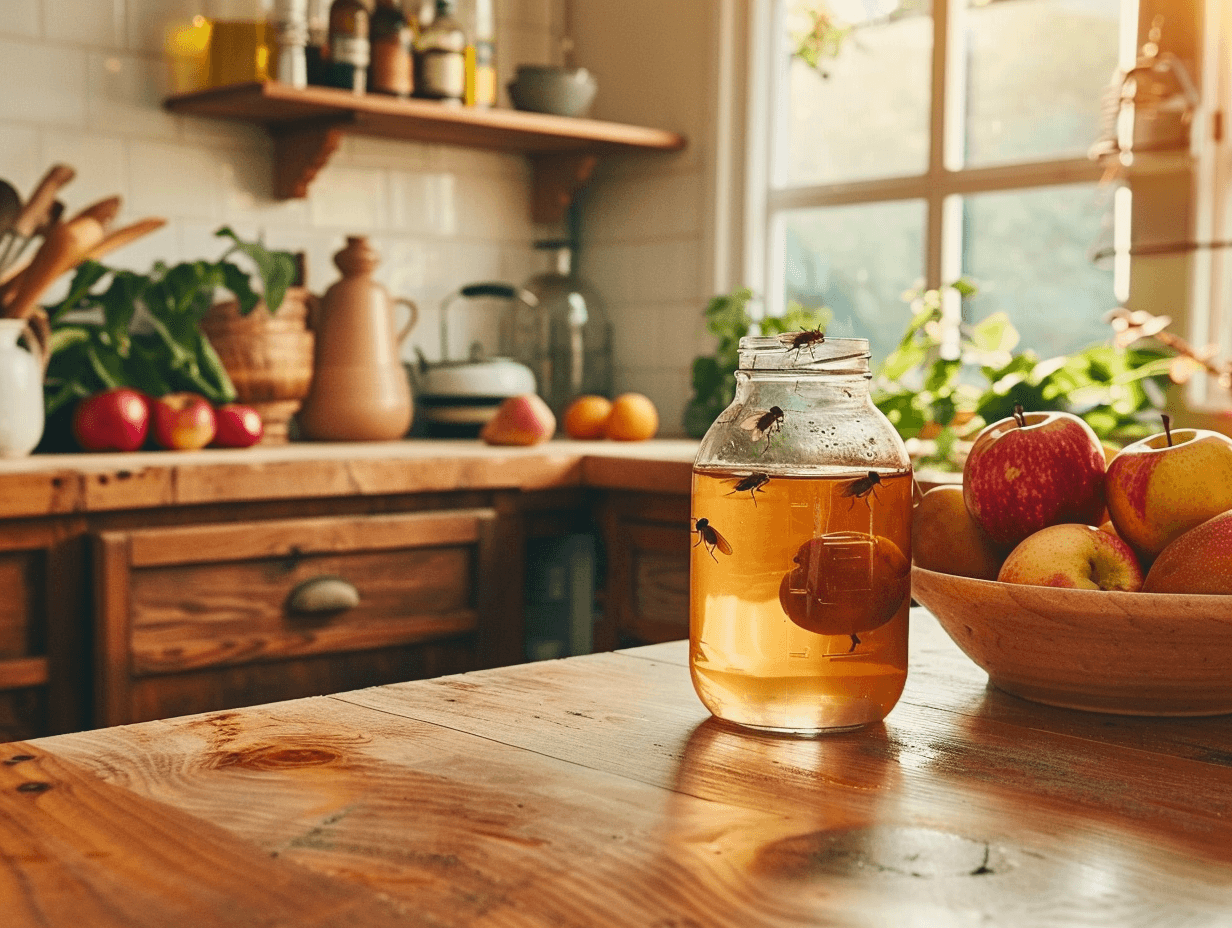Introduction
Fruit flies can be a common nuisance in many households, especially during warmer months when fruits and vegetables ripen quickly. These tiny pests are highly attracted to fermenting and sugary substances, making kitchens and pantry areas prime breeding grounds. If left unchecked, fruit flies can multiply rapidly, leading to infestations that are difficult to control. Using a simple DIY fruit fly trap is an effective and affordable way to reduce their numbers and prevent further spread. This method not only targets existing flies but also helps catch new ones before they become a bigger problem. By understanding how to make and use these traps, you can maintain a cleaner, more enjoyable home environment.
What is a Fruit Fly Trap and Why is it Useful?
A fruit fly trap is a simple yet effective device designed to lure and capture fruit flies by using attractants like apple cider vinegar, ripe fruits, or sugary mixtures. These solutions mimic the smells that fruit flies naturally seek for feeding and breeding, making the trap highly effective. The flies enter the trap but are unable to escape, reducing their numbers quickly. Homemade traps are affordable, easy to make, and use common household ingredients, making them accessible for most people. They provide a non-toxic alternative to chemical sprays, ensuring safety for families and pets.
Fruit fly traps are useful because they target the problem at its source, helping to control infestations before they grow out of hand. Controlling fruit flies is crucial to prevent contamination of food and surfaces, which can lead to spoilage and potential health risks. By reducing the population of these pests, traps help maintain a hygienic kitchen environment and improve overall comfort in the home. Additionally, regular use of traps can prevent the need for stronger chemical pesticides, supporting an eco-friendly approach to pest control. Incorporating fruit fly traps as part of a comprehensive cleaning routine is key to long-term fly management.

Benefits of Making a Fruit Fly Trap at Home
Making a fruit fly trap at home has several benefits:
- Cost-Effective: The materials needed to make these traps are common and usually already found in most households, such as vinegar, ripe fruits, and liquid soap. This saves money compared to buying commercial traps.
- Safety: Homemade fruit fly traps are safe and non-toxic. Unlike some commercial products that contain chemicals, homemade traps use natural ingredients that pose no risk to the health of people or pets. This makes them ideal for use anywhere in the home, especially in the kitchen.
- Efficiency: Homemade traps are effective in reducing the fruit fly population, keeping the home free from these pests in a simple and quick manner.
Materials Needed to Make a Fruit Fly Trap
To make a homemade fruit fly trap, you will need the following materials:
1. A glass jar: Preferably with a lid. It can be a jam jar or any other small jar you have at home.
2. Apple cider vinegar: One of the most effective ingredients for attracting fruit flies.
3. Liquid soap: Helps break the surface tension of the vinegar, causing the flies to get trapped.
4. Ripe fruits: You can use pieces of ripe fruit to increase the trap's effectiveness.
5. Plastic wrap: To cover the jar opening if you don’t have a lid with holes.
6. Toothpicks or needles: To pierce small holes in the lid or plastic wrap, allowing the flies to enter but not escape.

Simple Steps to Create a Homemade Fruit Fly Trap
1. Prepare the jar: Start by thoroughly cleaning and drying a glass jar to ensure no residues interfere with the trap’s effectiveness. If your jar has a lid with pre-made small holes, this is ideal. If not, prepare to use plastic wrap to cover the opening securely.
2. Add vinegar: Pour about half a cup of apple cider vinegar into the jar. This vinegar emits a strong, fruity smell that is highly attractive to fruit flies, mimicking the fermenting scents they seek.
3. Add liquid soap: Add 2 to 3 drops of liquid dish soap to the apple cider vinegar. The soap reduces the surface tension of the liquid, causing any trapped flies to sink and drown rather than land and escape.
4. Add the fruit: Drop small pieces of ripe or overripe fruit, such as banana, peach, or melon, into the jar. The fruit increases the trap’s appeal by providing additional scent and a food source for the fruit flies.
5. Cover the jar: If your jar does not have a perforated lid, tightly cover it with plastic wrap and secure it with a rubber band around the jar’s rim. This creates a sealed entry point for the flies.
6. Make holes: Using a toothpick or needle, carefully pierce small holes in the plastic wrap or lid. These holes should be just large enough to let the fruit flies in but small enough to prevent them from flying back out, effectively trapping them inside.
Types of Fruit Fly Traps You Can Make at Home
There are several ways to make fruit fly traps at home. Here are three effective types:
- Apple Cider Vinegar Trap :
- Overripe Fruit Trap :
- Plastic Wrap Trap :
Tips for Placing Fruit Fly Traps in Your Home
To maximize the effectiveness of your fruit fly traps, follow these tips on where and how to place them:
- Strategic Locations :
- Frequency of Review and Maintenance :
- Cleaning the Area :
Conclusion
Fruit flies can be a nuisance in any home, but with simple and effective homemade traps, you can keep them under control. Making your own traps is not only cost-effective and safe but also an efficient way to keep your kitchen and other spaces free from these pests. With the right materials and steps, and strategically placing your traps, you can enjoy a cleaner and healthier environment.




